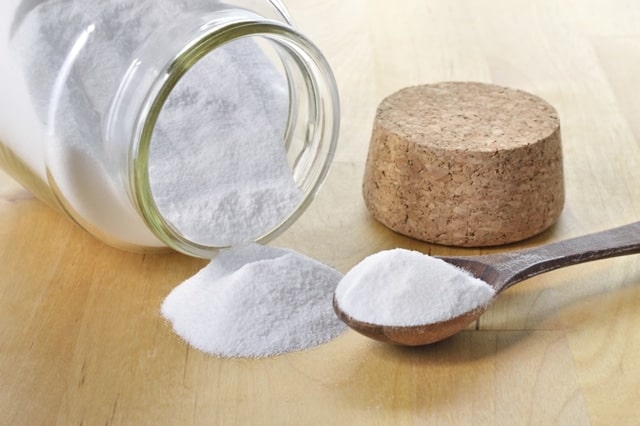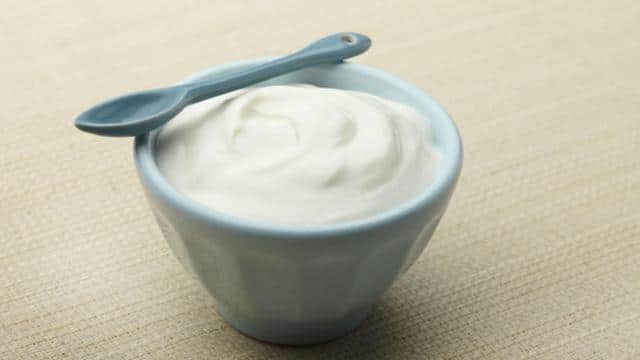Strenuous exercises may lead to serious issues like lactic acid build-up in the body. The lactic acid build-up has become a very common problem among youngsters these days.
During recent times, there is a lot of focus on bodybuilding and performing strenuous exercises. It has become imperative for people to stay healthy. Yet, there are certain risks attached to this as well.
Learn how to reduce lactic acid from different parts of the body.
Table of Contents
What Is The Lactic Acid Build Up?

When our body performs strenuous exercises, we tend to breathe faster. The reason behind this is that we attempt to provide oxygen to other parts of our body. This is known as the aerobic way of generating oxygen which is required by the working muscles of the body.
There are instances when our body uses the anaerobic way to produce oxygen in the body. Usually, this way is used by the body when we perform weightlifting exercises. This is because more energy is required by the body.
This anaerobic energy comes from a particular process. During this process, glucose is broken down into a substance called pyruvate.
When the body has enough oxygen, then pyruvate breaks down into simpler substances. This is done to provide energy to the body.
If the body does not have enough oxygen, pyruvate gets converted into a substance called lactate.
This allows the glucose to break and thereby provide energy to the body. When anaerobic energy production continues, lactic acid accumulates in the body.
Additionally, when there is a large amount of lactic acid build up in the body, it leads to lactic acidosis. This build-up in the acid level causes an imbalance in the body’s pH level.
This is because lactic acid spikes up in the blood of the person and starts affecting the vital organs of the body.
Side Effects Of Lactic Acid Build-Up In The Body

The lactic acid build-up is curable. Yet, if ignored for long, it may prove to be life-threatening. This problem has many side effects.
Some of them are mentioned below so that you remain cautious while exercising:
1.The acidity of the muscle cells increases causing disruptions of other metabolites.
2. The breakdown of glucose is restricted
3. Usually, once the body relaxes, the lactic acid so produced is converted back to pyruvate. However, if you are suffering from a high lactic acid build-up in the body, the lactic acid doesn’t convert back to pyruvate. This aids in increasing the lactic acid level in the body.
4. Our body requires an alkaline solution to sustain. But, due to the presence of high lactic acid in the blood flow, our organs may be rendered dysfunctional.
5. Results in the severe burning sensation which is felt when a person is exercising.
6. Also results in muscle soreness or tenderness after 24 hours of strenuous exercising.
7. May lead to loss of strength and weakness in the body.
8. Vomiting or the feeling of nausea may become paramount in the person affected.
9. Rapid breathing and increased heart rate while performing activities are experienced. It may persist even after exercises.
10. Swelling in certain joint areas such as the kneecap, calf area or even the elbows.
11. Severe stomach or abdominal pain due to the increased presence of lactic acid in the body.
12. It may also lead to confusion and frequent misunderstanding of events.
13. The stiffness of muscles.
14. Having a breath which smells fruity. This is a sign of diabetic acidosis and may prove to be dangerous if not rectified immediately.
15. Loss of appetite due to the excessive presence of acid in the abdominal region.
16. The delayed onset muscle soreness may also lead to inflammation of the muscles.
These were the major visible and general side effects of lactic acid build-up in the body. There may be others as well. Yet, the others are subject to the body type of the person and may not be seen in everybody.
How Is Lactic Acid Removed From The Body?
Usually, lactic acid is removed from the body in a very natural way. The excessive lactic acid in the body migrates to the tissues which may use it like the heart, liver or kidneys.
They tend to use the extra lactic acid as fuel by breaking it down into carbon dioxide. This cycle of the tissues producing lactic acid and the other organs using it is called the Cori cycle.
It takes about an hour for your body to remove the excess lactic acid. You can hasten the process by performing cooling down exercises. This is because they promote quick delivery of oxygen to the muscles.
A mild cardio exercise such as cycling has shown to be effective in lowering lactate levels in the body. But, passive recovery is inadequate to reduce the lactic acid content in the body.
There may be other unique ways of removing lactic acid from the body. This method tries to increase the lactate threshold of the body. Thus, it makes the increase of lactic acid in the body nugatory.
You can raise your lactate threshold with endurance training. Long and steady runs help develop aerobic capacity in the body. This is because it helps in developing small blood vessels, which promote efficient oxygen transport to the muscles.
Further, it also helps the heart and lungs to work in an efficient manner. The amplified availability of oxygen helps to hinder the lactate threshold. Coach Brian Mackenzie also recommends training at about 85-90% of your heart rate. This should be done for about 20 minutes to help improve your lactate threshold.
There are other ways also to remove lactic acid from the body. The other ways may be ranging from prescribed medication to some advanced procedures. These procedures prove to be expensive and at times, ineffective also.
Yet, it is advised to stick to natural ways of removing and reducing the extra lactic acid present in the body. In this manner, your body will remain safe.
How To Reduce Lactic Acid Buildup In The Body?
Lactic acid build -up in the body is not a permanent situation and can be reduced if taken care of. There are many ways to reduce the lactic acid build-up in the body. Some of the tried and tested ones are mentioned herewith:
- Controlled weightlifting is one of the major ways to reduce lactic acid build-up in the body. Weightlifting speeds up the lactic acid build-up in the body. This is because the body requires more oxygen than normal. Controlled weightlifting exercises will not cause muscle tears. Also, the secretion of lactic acid in the body will remain stable.
- You can use a topical ointment over the sore areas to reduce the lactic acid build-up in the body. Such ointments create a cool sensation that tries to distract the nerves from the pain. In this way, it offers relief to the body.
- Massage the legs and affected areas gently. Massage creates a soothing sensation and provides relief to the body. It is advised that the message should be done with warm water so that the muscles relax a bit more.
- Stay hydrated. As lactic acid is water soluble, you should drink adequate amounts of water. This will help neutralize the excess lactic acid present in the body.
- The intake of magnesium should be increased. This will help provide an adequate amount of energy to the body while exercising. Also, magnesium helps the body to break down glucose but in a restricted manner.
- Stretching before a workout and cooling down after a workout is important to reduce the lactic acid in the body. This helps the muscles to stretch before beginning the exercises. This is also helpful because it helps to open up the body.
- You can also consume some amount of baking soda as it works as an antacid. If you consume some amount of baking soda, it will help kill the excessive lactic acid present n the body.
- Breathe deeply; the burning sensation which you feel is due to lack of oxygen in the body. You can reduce that by breathing while you exercise. Try to breathe at an even pace through your nose. This will help to deliver oxygen to the other parts of your body. Thus, this may reduce the lactic acid build up in the body.
- Workout infrequent intervals; the more fit you are, the less lactic acid will be released in your body. Try to work out as many times a week as possible but try to take at least 1-2 days of rest. Gradually, increase the intensity of your workout. This will help you become more accustomed to the routine and your body will accept the change.
- Decrease the intensity of the workout if you feel a burning sensation. This is because the burn means you are over exerting your body. Try to keep the number of repetitions low and then increase the pace.
- Stay active; take rest after the workout but lead an active life. This will help in keeping your metabolism healthy and moving. This will also help in keeping the lactic acid content at a normal level in the body.
- You can also use a foam roller to massage your back and other parts of the body. This would help to relax the strained muscles. Further, it would also help to reduce the inflammation caused by the muscles.
The above-mentioned ways are the easiest ways to reduce the lactic acid build up in the body. If the presence of lactic acid build up in the body goes out of hand, then other ways can be utilized. Doctors need to know the reason behind your acidosis to conclude as to how to treat it.
Yet, some treatments are safe to use for any type of acidosis. For example, your doctor may provide you with sodium bicarbonate to increase the pH of your blood. This can be done either by mouth or by an intravenous (IV) drip. Also, it is to be noted that if not reduced well within time, lactic acid may lead to severe complications as well.
The complications may range from kidney failure to kidney stones. It may also lead to bone diseases and delayed organ growth. Thus, it is imperative to reduce the lactic acid build up in the body as soon as possible.
These were some of the ways to reduce excessive lactic acid in the body. The above-mentioned methods are most simple to follow. Thus, everyone can try out these ways to solve the problem you are facing.
How To Prevent Lactic Acid Build Up When Running?

It is said that “a stitch in time saves nine”. This phrase means that if you can prevent a problem then you should try to prevent it immediately. There are different ways to prevent lactic acid build-up in the body, as each body type is different.
And so, everyone reacts to lactic acid build-up in their own manner. Yet, some of the major ways to prevent lactic acid build-up in the body are mentioned below:
- You are advised to follow a balanced diet so that your body gets all the nutrients it requires. Start having small carbohydrate-containing snacks before a workout. An example could be a small fruit or a serving of yogurt.
- Another unique way to prevent lactic acid build-up is the consumption of pickle juice before a workout. Yet, if you are suffering from high blood pressure or an impaired kidney functioning, then you should avoid this.
- Warming up before a workout has become a must. This is because it increases your body temperature and lessens lactic acid in the body.
- Working out regularly is also another way to reduce the excess lactic acid in the body. In this way, your body’s capability of intensive workouts increases. This would lessen muscle cramps.
- Consuming low-fat milk after a workout is a good idea. This is because it provides carbohydrates and proteins to the body.
- Sodium intake should be limited and you should avoid taking excessive salt in your diet. Salt leads to water retention in the body which tends to increase in the secretion of lactic acid in the body.
- To decrease the risk of fatigue and weight loss, carbohydrate intake should be restricted.
Foods That Reduce Lactic Acid
While controlling lactic acid build-up in the body, one of the most important areas is controlling the food items which are ingested.
Some of the food items which should be ingested are:
1.Eat Foods Which Are Rich In Fatty Acids

This helps the cells to break down glucose into the body. This also helps to limit the need for lactic acid in the body during a tough workout. You can get essential fatty acids from:
a) Salmon, tuna, and mackerel
b) Nuts and seeds like flaxseeds and walnuts
c) Plant oils like sunflower oil, corn oil etc.
2. Drink Baking Soda

As discussed above, it is an alkaline substance, thus it helps to neutralize the lactic acid in the body. It will also help you to work out for a longer period of time as your muscles will not burn quickly.
The correct dosage is to mix 0.3 g of baking soda for every kg of body weight along with some cold water. You may even add some lemon drops for flavor.
Eat food containing Vitamin B: Vitamin B helps to transport glucose around the body and it helps to fuel the muscles during a workout. Some of the foods which contain high quantities of Vitamin B are:
a) fish
b)beef, poultry
c) eggs
d) dairy products
3.Increase Your Magnesium Intake
Healthy magnesium levels help the body to deliver energy to the muscles. In this way, it limits the build-up of lactic acid. Vegetables which help to increase the magnesium intake in the body are:
a) Swiss chard
b) Spinach
c) Collard greens and turnip greens
d) Seeds such as pumpkin and sunflower seeds
Yet, there are certain food items which you should avoid consuming when suffering from a high lactic build-up in the body. They are mentioned here with:
Food To avoid consuming when suffering from a high lactic build-up in the body
4. Yogurt

Yogurt consists of bacteria called lactobacillus, which produces lactic acid in the body. While you are suffering from high levels of lactic acid in the body, it is suggested not to have dairy products.
5.Sourdough Bread

This particular bread is also baked in yeast. It functions as an acidic food item when consumed. It eases the breakdown of pyruvate into lactic acid. Thereby they increase the content of lactic acid in the body.
6. Wine

Wine has the presence of yeast and lactic acid bacteria. This should be consumed only in small amounts. Consumption in huge amounts may lead to an influx of lactic acid in the blood cells. That may lead to serious problems.
The intake of the following juices should also be restricted. This is because the pH level of each one of them is too high for a person who is suffering from lactic acid build-up:
- Lemon juice (pH: 2.00–2.35)
- Blue plums (pH: 2.80–3.40)
- Grapes (pH: 2.90–3.82)
- Pomegranates (pH: 2.93–3.20)
- Grapefruits (pH: 3.00–3.75)
- Blueberries (pH: 3.12–3.33)
- Pineapples (pH: 3.20–4.00)
- Peaches (pH: 3.30–4.05)
- Oranges (pH: 3.69–4.34)
FAQ’s
1. Are Sore Muscles An Effect Of High Level Of Lactic Acid In The Body?
Sore muscles after the workout may be a cause of high level of lactic acid build-up in the body. But, not much text has been furnished to prove this aspect till now. Lactic acid results in a burning sensation in the muscles while working out.
2. Is Lactic Acid Build-Up Bad For Runners?
It is a matter of fact that lactic acid build-up does have some harmful side effects. Thus it cannot be ignored at all. The reason of why it is harmful to runners is that it tends to make the muscle very weak. This leads to fatigue and easy tiring out of the body.
3. Which Is The Most Helpful Technique Which Provides Relief To The Person?
The most trusted technique to reduce lactic acid in the body is exercise. Also, a healthy and balanced diet helps to provide relief to the body gradually. Warm baths and massages may provide instant relief, yet; their effect fades away.
We hope that through this article you are able to understand the reasons and symptoms of this problem. Also, we expect that this article helps you in all the possible ways it can.





